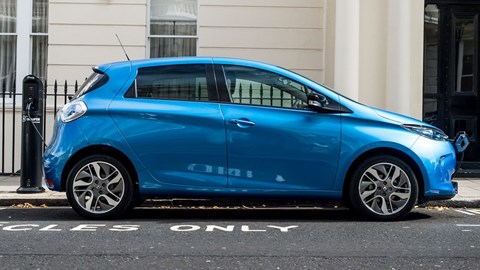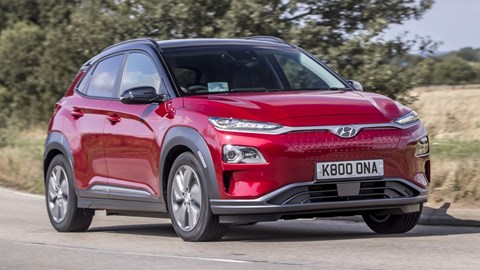► Government cuts £3000 incentive on EVs
► Plug-in Car Grant reduced to £2500
► Cars above £35,000 now aren’t covered
The UK government has cut the availability of grants to support the take-up of electric cars – reducing the incentive from £3000 to £2500, and slimming the pool of vehicles that qualify. The move has angered environmental groups.
Mike Hawes, chief executive of the Society of Motor Manufacturers and Traders, said: 'The decision to slash the Plug-in Car Grant is the wrong move at the wrong time. New battery-electric technology is more expensive than conventional engines and incentives are essential in making these vehicles affordable to the customer. Cutting the grant and eligibility moves the UK even further behind other markets, markets which are increasing their support, making it yet more difficult for the UK to get sufficient supply.'
Politicians argue that the grant is reducing in line with falling costs – and will spread the budget further. Transport minister Rachel Maclean said: 'We want as many people as possible to be able to make the switch to electric vehicles... We are re-focusing our vehicle grants on the more affordable zero-emission vehicles.'
Plug-in Car Grant: background and how it's fallen from £5000 per EV to half that
British motorists have benefited from a scheme called the Plug-in Car Grant (PiCG) to encourage the take-up of electric cars since 2011. The financial incentives arrived around the same time as the first-generation Nissan Leaf – an electric car that broke new ground by being everyday-usable in an era when most electric cars were still something of a joke – and provided a £5000 cash discount off the list price of any qualifying vehicle.

The incentive was launched primarily to reduce emissions and improve air quality through increased take-up of zero-emissions vehicles (EVs and plug-in hybrids, or PHEVs). Since its introduction in 2011, around 200,000 cars have been bought with the assistance of the PiCG, but in absolute terms this is still a low take-up, with UK EV sales still accounting for less than 2% of the market.
The government revised the PiCG in 2016, 2018, 2020 and again in March 2021, reducing the number of cars covered by the grant as well as the amount of money offered. In 2016, the amount offered was reduced from £5000 to £4500 (or £2500 for plug-in hybrids) before reducing further in 2018, with EVs then receiving a grant of £3500. That was the point at which PHEVs were no longer eligible for the grant.
Then in the spring 2020 Budget, this was further reduced to £3000 – and it's now been adjusted again so that EVs costing more than £35,000 are no longer eligible for any subsidy whatsoever and only £2500 is available. The logic being, if you can afford a super-duper top-end EV, taxpayers' money shouldn't be used to subsidise you.
Which cars qualify for the Plug-in Car Grant subsidy?

The government has scrapped the previous Category 1-3 groupings of eligible vehicles. The following list was published in March 2021, confirming which models under £35,000 would attract the Plug-in Car Grant.
Only vehicles with emissions under 50g/km of CO2 qualify – and they must have a fully electric range of at least 70 miles.
How do you claim the electric car grant?
If you purchase an eligible car, the dealer will sort out all of the paperwork and the grant will be deducted from the car’s list price. The PiCG only applies to new purchases – it’s not possible to get cash off the price of a used vehicle.
Cars that qualify for the PiCG
- Citroen ë-C4 – Sense Plus
- Citroen ë-C4 – Shine
- DS 3 Crossback E-Tense – Prestige
- DS 3 Crossback E-Tense – Performance Line
- Honda E
- Hyundai Ioniq Electric – Premium
- Hyundai Kona Electric (39kWh) – SE Connect
- Hyundai Kona Electric (39kWh) – Premium
- Kia e-Niro (39kWh) - 2
- Mazda MX-30
- MG MG5 EV
- MG ZS EV
- Mini Electric – Level 1
- Mini Electric – Level 2
- Mini Electric – Level 3
- Nissan e-NV200 (5 seater) – Visia
- Nissan e-NV200 (7 seater) – Visia
- Nissan Leaf (40kWh) – Acenta
- Nissan Leaf (40kWh) – N-Connecta
- Nissan Leaf (40kWh) – Tekna
- Peugeot e-208
- Peugeot e-2008 – Active Premium
- Peugeot e-2008 – Allure
- Renault Zoe
- SEAT Mii electric
- Skoda Citigo-e iV
- Skoda Enyaq iV 60 Nav – Loft
- Skoda Enyaq iV 60 Nav – Lodge
- Smart EQ ForTwo
- Smart EQ ForFour
- Vauxhall Corsa-e
- Vauxhall Mokka-e – SE Nav Premium
- Volkswagen e-Golf
- Volkswagen e-Up
- Volkswagen ID.3 Pro (58kWh 145PS) – Life
- Volkswagen ID.3 Pro Performance (58kWh 204PS) – Life
Further electric car reading:
